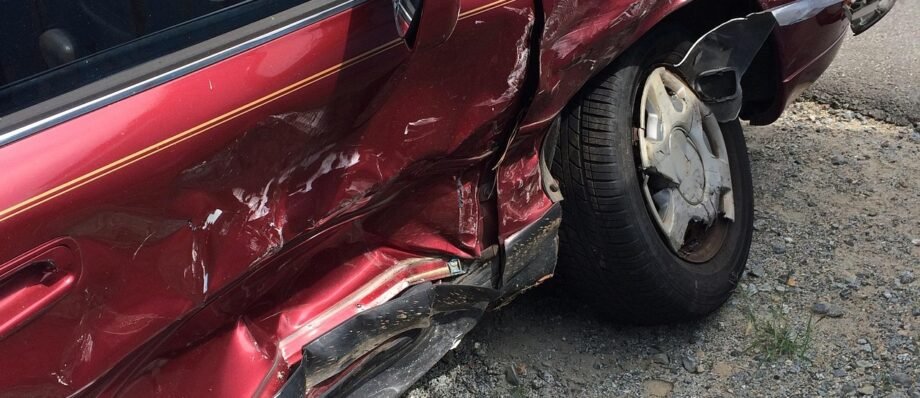What to Do If You’re Hit by an Uninsured Driver
You’re driving home, minding your own business, when suddenly—crash!—another car slams into you. As you exchange information, you realize the worst: the other driver doesn’t have insurance. Now what?
Unfortunately, uninsured drivers are more common than you might think. According to the Insurance Information Institute (III), about 1 in 8 drivers in the U.S. is uninsured (source). So, if you’re ever in this situation, knowing your rights and options can make all the difference.
Let’s break down what you should do next.
Immediate Steps After an Accident with an Uninsured Driver
Whether or not the other driver has insurance, these steps will help protect your rights and improve your chances of getting compensated:
- Call the Police – Always report the accident, especially if the other driver is uninsured. A police report serves as valuable evidence for your claim.
- Gather Evidence – Take photos of both vehicles, the accident scene, and any visible injuries. Get witness statements if possible.
- Exchange Information – Even though they lack insurance, still get their name, contact details, and vehicle information.
- Notify Your Insurance Company – Report the accident immediately. If you have uninsured motorist coverage, this is where it kicks in.
- Seek Medical Attention – Even if you feel fine, some injuries, like whiplash, may take time to appear.
How Does Insurance Cover Uninsured Motorists?
If the at-fault driver is uninsured, your insurance may cover your expenses, depending on your policy. Here’s how:
1. Uninsured Motorist Coverage (UM)
This optional coverage helps pay for medical bills, lost wages, and pain and suffering if you’re hit by an uninsured driver. Some states require UM coverage, while others make it optional.
2. Underinsured Motorist Coverage (UIM)
If the at-fault driver has some insurance but not enough to cover your damages, UIM can help bridge the gap.
3. Collision Coverage
Even if the other driver is uninsured, collision coverage will pay for your car repairs—regardless of fault. However, you’ll have to cover the deductible.
4. MedPay or Personal Injury Protection (PIP)
These policies help cover medical expenses, regardless of who was at fault, and are especially useful if the at-fault driver lacks insurance.
What If You Don’t Have Uninsured Motorist Coverage?
If you don’t have UM coverage, here are some alternative options:
- Suing the At-Fault Driver – You can file a lawsuit, but if they couldn’t afford insurance, they may not have enough assets to cover your damages.
- Crime Victim Compensation Programs – Some states offer funds for accident victims if the uninsured driver was acting recklessly.
- Health Insurance – Your health coverage can help with medical expenses, though you may still be responsible for deductibles and co-pays.
Legal Considerations: Can You Sue an Uninsured Driver?
Yes, you can sue an uninsured driver, but collecting damages is often difficult. Many uninsured drivers lack significant assets, making it hard to recover what you’re owed. Still, consulting with a personal injury lawyer can help you determine whether legal action is worthwhile.
Preventive Measures: Protect Yourself from Uninsured Drivers
Given the number of uninsured drivers on the road, taking these proactive steps can protect you:
- Purchase Uninsured/Underinsured Motorist Coverage – It’s usually affordable and can save you thousands in medical bills and car repairs.
- Consider Collision Coverage – This ensures your vehicle is repaired, even if the other driver has no insurance.
- Drive Defensively – While accidents aren’t always avoidable, staying alert can reduce your risk.
Frequently Asked Questions (FAQs)
1. What happens if an uninsured driver hits me and I don’t have UM coverage?
You may have to rely on your health insurance, collision coverage, or pursue legal action against the at-fault driver.
2. Can I go after the uninsured driver’s assets?
Yes, but if they don’t have enough financial resources, it may not be worth the effort.
3. Will my insurance rates go up if I file a UM claim?
Possibly. While you weren’t at fault, some insurers may increase premiums after a claim. Check with your provider for specific policies.
4. Is UM coverage required in all states?
No, but some states do mandate it. Check with your state’s insurance laws.
5. Should I get UM/UIM coverage if I already have health and collision insurance?
Yes, because health insurance won’t cover lost wages or pain and suffering, and collision coverage doesn’t compensate for medical bills.
Final Thoughts
Getting hit by an uninsured driver is frustrating, but knowing your options can ease the stress. If you have uninsured motorist coverage, your insurance should help cover the costs. If not, exploring legal options or using other forms of insurance can provide relief.
When in doubt, consulting a lawyer can clarify your rights and help you recover the compensation you deserve.
Get the Compensation You Deserve After Your Accident
If you’ve been injured in a car crash that wasn’t your fault, don’t settle for silence or confusion. Lawayer.com connects you with› experienced attorneys who can fight for your rights and help you recover what you’re owed. Time matters—take the first step now



